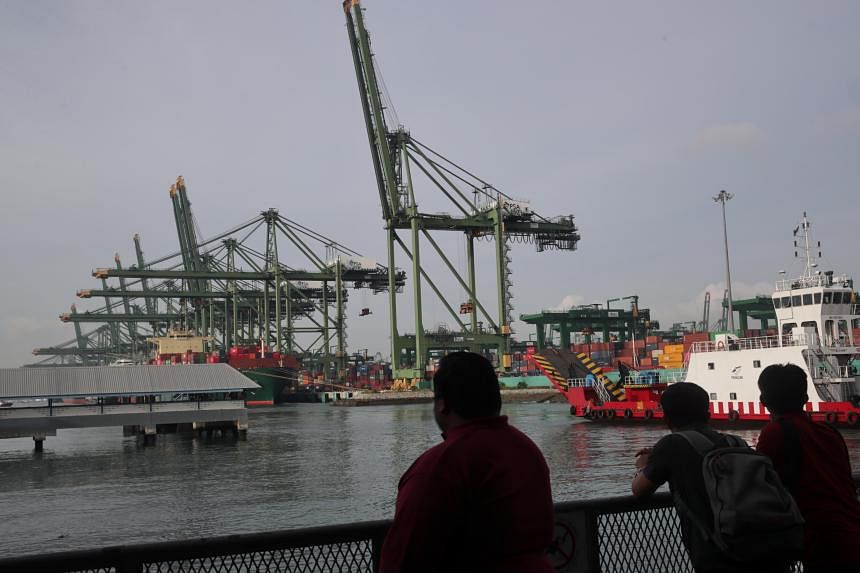SINGAPORE - Singapore’s economic growth will accelerate over the next two years, boosted by stronger exports, while inflation will slow, the Asian Development Bank (ADB) said on April 11.
The Manila-headquartered bank said Singapore will clock gross domestic product (GDP) growth of 2.4 per cent in 2024, up from 1.1 per cent in 2023.
Singapore’s Ministry of Trade and Industry (MTI) has forecast that GDP in 2024 will expand between 1 per cent and 3 per cent. The International Monetary Fund projects Singapore’s growth at 2.1 per cent for 2024.
MTI will release the advance GDP estimates for the first quarter of 2024 on April 12. On the same day, the Monetary Authority of Singapore (MAS) will issue its quarterly statement on its Singapore-dollar policy stance.
ADB, which provides loans and grants for developing nations across the Indo-Pacific region, said growth in manufacturing is expected to gradually pick up in tandem with the turnaround in global electronics demand.
Domestic- and tourist-related activities will moderate as demand normalises, while construction will continue to benefit from contracts awarded in 2023, ADB said in its latest Asia Development Outlook report.
The growth momentum will continue into 2025, with GDP growth likely to pick up pace to 2.6 per cent in that year.
ADB chief economist Albert Park said Singapore is among the export-led economies of the region that will benefit from an upturn in global demand, especially for technology exports such as semiconductors.
“The end of interest rate hiking cycles in most economies as well as continued recovery in goods exports from an upturn in the semiconductor cycle will support growth,” he said at a virtual media briefing ahead of the report’s release.
Inflation in Singapore is expected to moderate to 3 per cent in 2024 and 2.2 per cent in 2025, the report also said.
ADB said factors contributing to easing inflation include lower cost of accommodation on higher housing unit supply, reduced private transport costs on lower oil prices, and normalising food prices and costs of services. The appreciating nominal effective exchange rate of the Singapore dollar should keep imported inflation low in the coming months.
MAS expects both headline and core inflation – that excludes private accommodation and transport costs – to be in the range of 2.5 per cent to 3.5 per cent in 2024.
Dr John Beirne, principal economist at ADB, said easing inflation in Singapore is in line with a broader trend across South-east Asia, where inflation will drop to 3.2 per cent in 2024 from 4.1 per cent in 2023.
Inflation in Singapore will decrease further to 2.2 per cent in 2025, with the pace of price gains in South-east Asia easing to 3 per cent.
However, ADB warned that the risk to the outlook remains tilted to the downside.
The risks include the US Federal Reserve delaying its interest rate cutting cycle, widely anticipated to begin early in the second half of 2024. Higher rates for longer can depress global demand and investment flows, both important sources of growth in Asia.
Spillover effects from the economic slowdown and deflation in China can also hurt growth prospects of its major trading partners in the region, ADB noted.
The disinflationary momentum could also be disrupted amid the conflict in the Middle East, which has already affected shipping through the Red Sea route, a key trading route connecting Europe and Asia. Adverse weather events could disrupt global supply chains and commodity markets.
ADB estimated that the surge in benchmark Thai rice prices to a 15-year high in August 2023 subsequently led to large domestic rice price increases in economies where the share of rice in the overall consumption basket is high.
“Several factors could keep rice prices high in 2024,” ADB said.
The US National Oceanic and Atmospheric Administration forecasts that El Nino – a weather pattern resulting from variations in ocean temperatures in the equatorial Pacific – will persist until the second quarter of 2024.
“This will likely add upward pressure on rice prices, given rice’s susceptibility to changes in temperature and precipitation, and high risk of crop losses during El Nino,” ADB said.


